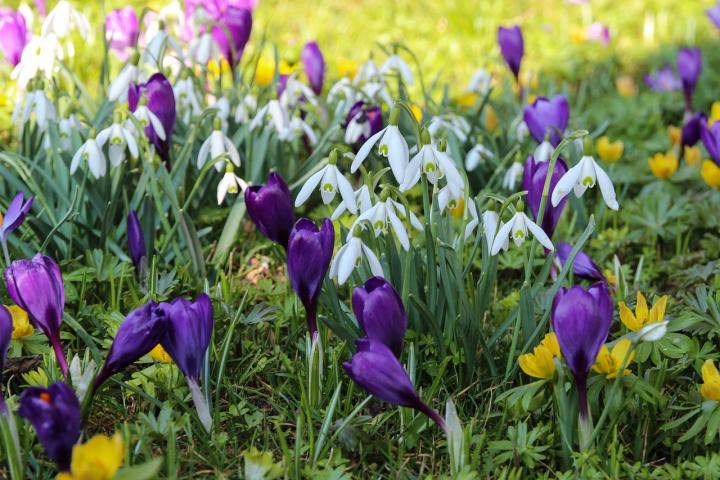






Spring will be off to a very early start in 2016, thanks to leap day weirdness! Have you noticed that the equinox used be on the 21st? This year, spring begins March 19 or 20, depending on your time zone.
February 29 has consequences that affect more than just being the rarest birthday. Let’s back up …
The calendar is nearly as perfect. Time is something we humans do perfectly. Atomic clocks divide each second into 9,192,631,770 parts, and the superaccurate time is then transmitted to anyone with a phone (303-499-7111) or web access (http://www.time.gov/) or a GPS or a smartphone.
But consider the year 2000. That February, for the first time in four centuries, a year divisible by 100 did NOT skip the leap year. Meaning, there WAS a February 29 that year.
So what? Well, remember how our Gregorian calendar works? Years divisible by four are leap years. But if a year is also divisible by 100, it SKIPS the leap year. Thus, 1700 and 1800 and 1900 did NOT have a February 29. (Hang in there.)
But our calendar system decrees that if a year is divisible by 400, it WILL be a leap year, so 2000 was the first century year with a leap day since Galileo grew a beard. The consequence of that little move will affect us during this next month.
You see, equinoxes and solstices happen earlier and earlier as each century wears on. We can’t let that continue, so that skip of the leap year in 1700 and 1800 and 1900 each created a sudden “jump” of one day. Bingo: those “first day of summers” and the other seasons got pushed back a day, which is all part of the plan. Generally, equinoxes and solstices happen on the 21st (except the fall equinox, which is on September 23rd).
But in 2000, omitting the usual century leap year prevented the calendar from jumping back. Solstices and equinoxes instead kept creeping earlier. In case you haven’t noticed, Spring began on March 21 when you were little but it’s been falling on the 20th for some years now. Well, in a few weeks, it’ll happen on March 19th for most US and Canadian time zones. Later this century, it’ll happen on the 19th every year.
To conclude? This will be the earliest spring since 1896!
It all happens because the number of days in a year isn’t even. A year lasts 365 days, 5 hours, 48 minutes, and 46 seconds. Call it 365.2422 days. If only the year were 11 minutes longer, or 365.25000 days, we could simply add one day every fourth year and take care of the fraction forever.
But because Earth spins a hair less than 365 ¼ times per year, we must sometimes omit that extra once‑every‑four‑year day, and that’s what creates all this fussing. Skip three leap years every four centuries and you’re accurate to one day in about 3300 years. (We even deal with THAT little glitch by skipping February 29 in the year 4000.)
A calendar that doesn’t accurately divide days into the year starts going weirdly out of sync. Seasons start happening at odd times. In the previous Julian calendar (where all century years were leap years) the annual 11‑minute error accumulated to where equinoxes were happening around March 11. The Easter Bunny was hopping around in the snow!
The present calendar takes care of everything. This leap year will make 2016 have the earliest seasons of our lives (thus far!).
Copyright © www.100flowers.win Botanic Garden All Rights Reserved